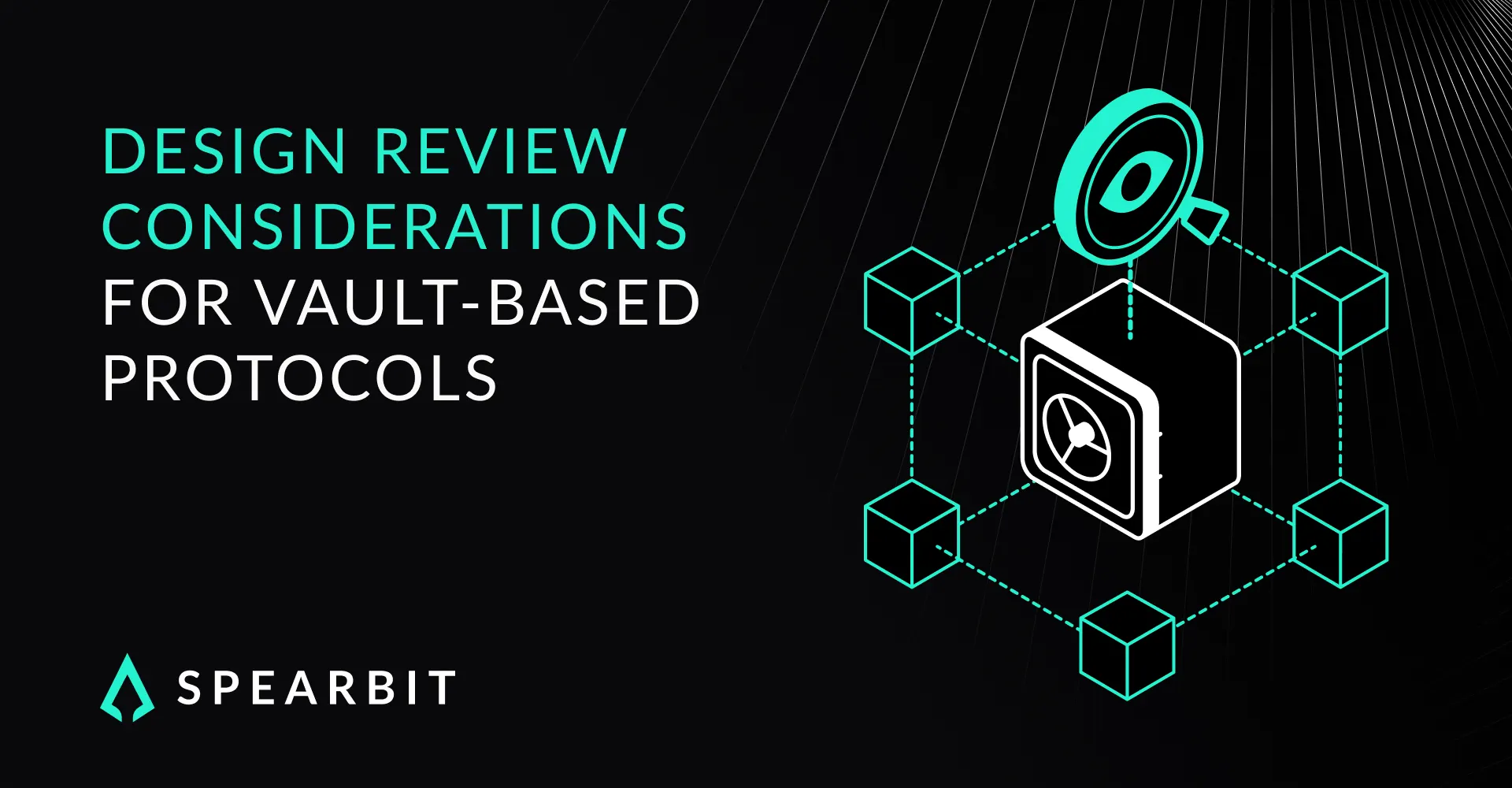Design Risk Modeling for Vault-Based Protocols
Vault protocols serve as structured asset containers within decentralized finance ecosystems. They manage pooled user funds, deploy strategies for yield generation, and maintain share-based accounting over time. Most commonly, they use ERC4626 to track user shares and abstract deposit and withdrawal behavior. These systems introduce multiple layers of complexity across execution logic, role permissions, and accounting frameworks. Design-phase review helps organizations mitigate structural flaws before implementation begins.
Security audits of vault-based systems focus on pre-deployment design decisions that affect system reliability, user fairness, and resistance to manipulation. This post outlines categories commonly assessed by protocol reviewers when evaluating vault designs before code is written.
Vault Share Mechanics and Accounting Logic
Vaults issue shares that represent a proportional claim on the total pool of underlying assets. Share pricing logic must align with total asset value and handle corner cases related to:
- Rebase behavior in yield-bearing or wrapped tokens
- Asynchronous updates between strategy performance and net asset value
- Delayed share issuance or batched minting events
- Manipulations that can lead to share inflation
Design reviews evaluate whether share value calculations can be influenced by deposit timing, manipulated inputs, or rounding inconsistencies. Asset-to-share conversions must preserve value alignment across user scenarios and volatile market conditions.
Strategy Integration and Execution Roles
Vaults typically interact with external strategies through specific modules or execution roles such as strategists or keeper contracts. These roles are responsible for:
- Allocating vault assets across strategies
- Triggering harvest events
- Moving funds during reallocation or migration
- Stoping the strategy when no longer profitable
Reviewers examine the access structure and constraints around these actions. Key questions include:
- What safeguards exist to prevent misaligned harvesting or strategy misuse?
- Can stale keeper inputs or delayed triggers affect yield distribution?
- Are there incentives or edge cases where strategists gain asymmetric advantage?
- Is the yield being shared correctly between all share holders?
- Are there Just-In-Time liquidity opportunities for external actors to get the rewards without committing liquidity to the protocol long term?
Protocols must define and test the boundaries of strategic execution, especially in systems dependent on timing-sensitive oracles or multi-chain deployments.
Withdrawal Flow and Exit Logic
Withdrawal behavior is critical in vault systems. Delayed or queued exits introduce design dependencies around prioritization, liquidity management, and fairness. Reviewers evaluate:
- Whether the exit queue can be reordered or influenced
- If the liquidity backing withdrawals can be depleted before processing
- Whether exit paths fairly represent share value under stress
- Can the withdrawal queue be bricked by anyone?
- Does the system push the funds to users or let’s them pull the liquidity on their own and how is the system designed around that
Well-defined withdrawal flows protect users under normal and adversarial conditions. Design modeling should account for congestion, partial exits, and strategic withdrawal patterns and be able to accomodate all users eventually on the event of a mass exit.
Synchronization of Strategy Value and Vault Accounting
Strategies accrue value at variable rates based on external markets, time-locked staking, or harvesting events. Protocols must align these gains with internal accounting.
Design evaluations consider:
- Time lag between strategy gains and user-visible net asset value
- Effect of rebasing or externally updated token balances on vault logic
- Mismatch between strategy performance cycles and share minting windows
Clear synchronization policies, such as gating deposits or controlling harvest cadence, reduce the likelihood of value misalignment or silent dilution.
Upgrade Paths and Migration Procedures
Vault systems evolve. Strategies may be deprecated, vault contracts replaced, or logic upgraded. Migration paths must support secure transitions without introducing centralization or loss of user funds.
Design review includes:
- Role configuration for upgrades and emergency paths
- Reallocation mechanics for partial vault states
- Verification steps for migrated balances and share conversion
Protocols should prepare for partial failures or halted migrations. Safe transitions require clearly defined thresholds, rollback options, and communication plans.
Value Consistency and Edge-Case Accounting
Vault logic is grounded in deterministic accounting between shares, assets, and user rights. Reviewers test for:
- Fixed-point math errors in share conversion logic
- Rounding edge cases that favor specific transaction patterns
- Accounting mismatch under batched or multi-step operations
- If protocol fee is correctly being calculated based on the gained yield
Systems that integrate with external tokens, wrappers, or pricing data must model consistency across integrations. Protocol designs should include assertions and invariants to preserve internal accounting consistency.
Spearbit Design Audits for Vault Protocols
Spearbit conducts early-stage architecture reviews for vault-based systems. These reviews emphasize threat modeling, execution roles, and accounting assumptions before any code is deployed.
Areas of focus include:
- Share issuance and burn modeling under dynamic deposits
- Keeper and strategist access simulation
- Withdrawal logic sequencing under liquidity stress
- Upgrade control mapping and fallback path review
- Scenario testing for state inconsistencies and partial failures
Our goal is to surface structural risks early and align security assumptions with protocol logic and user expectations.
Operational Readiness
Vaults manage the intersection of capital, execution autonomy, and user withdrawal rights. Design reviews allow protocols to define these systems clearly before they become brittle in production.
Organizations that invest in early validation reduce downstream security debt and demonstrate alignment with institutional standards for transparency and operational trust.
To schedule a vault protocol design audit or coordinate system modeling prior to deployment, contact us. Our network of protocol reviewers and infrastructure specialists helps secure capital systems from design to production.




